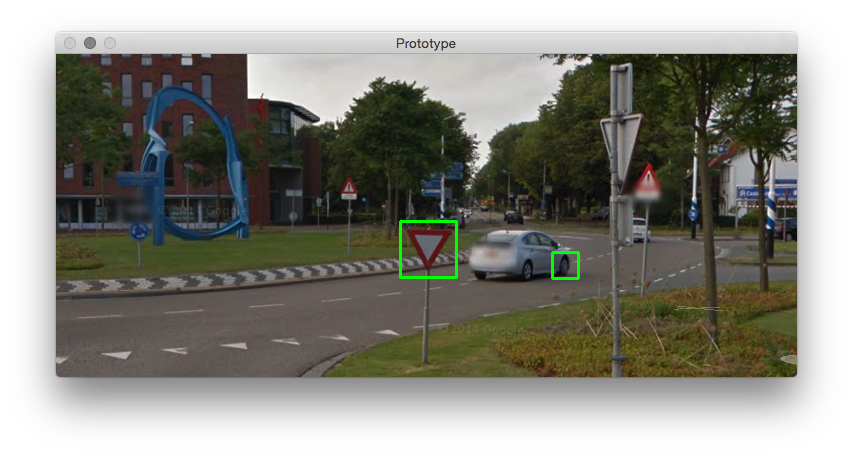It’s been a while! Don’t worry, we’re still alive. Let’s catch up! Last Sprint, Sprint 2, was all about computer vision. We chose to continue with recognizing traffic signs. Our idea was to automatically detect broken, dirty, crooked, or bent traffic signs. We would mount a camera to the car of the manager of the public space so that the analyst could pay attention to the road. For the detection of traffic signs in the video feed from the camera we needed a computer vision application.
We started with recording some videos of traffic signs in the area near the Lab. We quickly created a prototype that was able to recognize signs based on colour and shape. However, it was clear that we knew too little about computer vision. That is why we made an appointment with an expert in the field of computer vision. The talk with the expert was really enlightening. He mentioned that our initial method of detecting traffic signs was not the best solution. Shape detection, for example, may not work because a bent round sign isn’t circular anymore. The expert suggested that we should use an algorithm that is widely used for detecting faces. Using this algorithm we would be able to detect traffic signs. The detection of the state of the sign is, as the expert said, a project on its own.
Creating a prototype using the suggested algorithm was a lot of work. We had to ‘teach’ the algorithm to detect a specific traffic sign. To do this we needed to ‘feed’ the algorithm a lot (hundreds) of sample images containing the actual sign, and even more images not containing the sign. It is common that this process spans multiple days. This would be a problem time-wise since the sprint was coming to an end. For that reason we decided to give the algorithm an ‘easy course’. The process took 8 hours, 16 minutes, and 25 seconds. The result was an algorithm we could use to detect traffic signs (in some cases).
We noted during this sprint how little we know about computer vision. It was fun to explore computer vision though! After our talk with the expert we already started doubting our current idea, it would simply be too hard for three non-experts. After creating the second prototype we were thinking about how this solution would fit in our assignment; it has nothing to do with smart eyewear. It also solves a little part of a big problem. We therefore decided to take a different route in Sprint 3.







